Content from: www.omnivirt.com

1. Virtual Reality (VR)
In a society where you can virtually transport yourself anywhere in the world, it is only natural that savvy marketers are starting to take advantage of this technology.
Toms Shoes created an innovative VR experience that took customers on a journey through Peru to give a pair of shoes to someone in need. Toms transformed their tagline, “fashion for a good cause,” into a realistic experience that customers could explore.

For the purpose of marketing, you can expect to see VR technology utilized most often for special events and activations.
2. Augmented Reality (AR)
Marketers everywhere have been anxiously waiting to get their hands on AR, and now that the technology is here–you can expect to see it everywhere.
When it comes to marketing, AR technology is best used to help customers virtually sample different for-sale items or experiences.
From trying on nail polish, to previewing interior design ideas, and even to testing out plastic surgeries before going under the knife–marketers can expect to see a lot more from the rise of AR.

3. “Phigital” Marketing
Phigital marketing is a recently coined term for the integration between more traditional display marketing methods and newer digital marketing experiences.
(aka Physical + Digital = Phigital)
This Audi Display in London is a perfect example of phigital marketing in action. The showroom encourages users to engage by integrating interactive touchscreens in combination with the display of the physical vehicles to create the ultimate innovative marketing experience.

Phigital marketing is a tailored strategy to directly target millennials and generation Z
4. Cultural Relevance
Going viral in today’s internet driven society is hugely beneficial to driving high brand engagement. Developing culturally relevant marketing strategies is one of the best ways for a brand to go viral and in-turn garner significant media buzz.
Brands can stay culturally relevant by keeping up and playing into what’s happening in the moment. P&G recently launched a Gillette campaign addressing toxic masculinity just days after the American Psychological Association (APA) announced that “traditional masculinity” is harmful to society. P&G kept up with the now, and when they found a place to jump in and make a stand, they did.
5. Social Media Artificial Intelligence (AI)
There are numerous applications of AI in marketing but perhaps the one with the largest scope is social media. AI is capable of doing everything from categorizing Tweets, to gathering consumer insights, and even to analyzing social media patterns to help you to capitalize on trending topics at the right time.
Social media makes it easier than ever for brands to access their customers’ personas and buying behaviors. Social media AI can easily and efficiently aggregate this consumer data so that marketers can make more targeted and strategic decisions.
With the extra time that marketers don’t have to spend crunching numbers and analyzing data, they can focus more heavily on creative and strategy.

6. 3D Photos for Innovative Marketing
Facebook launched a 3D photo feature in October of 2018. These photos are taken with a dual-camera phone and combined with a depth map to create an image that appears to be in 3D. These immersive images are also designed to appear beautifully in a VR headset.
Marketers have gotten ahold of this technology to make innovative banner advertisements that quite literally jump off of the page. These images have the potential to revolutionize the display ad industry in 2019 as they result in a much higher CTR than flat, 2D ads.
7. Internet of Things (IoT)
The internet of things describes any device that connects to the internet, and may also be connected to other intra-connected devices. Today, the list of IoT devices includes everything from headphones, to smartphones, to enabled vehicles and even to some coffee machines.
IoT technology allows companies to see exactly where users are at in their buying journey which helps them to learn more about their customer and then market accordingly.
Since 2015, the internet of things has increased by almost 10 billion devices to a whopping 26.7 billion. The IoT will only increase exponentially over time so marketers should hop on the bandwagon ASAP and incorporate this innovative marketing technique.

8. 360° Video
360° video has been trendy for a while now, but how many times have you seen it used in advertising? Like 3D photo, marketers are just now starting to take advantage of this interactive technology to drive brand engagement.
In this Infiniti 360° video campaign, the user can opt to test drive the car through various kinds of terrain instead of just passively viewing a 2D banner ad.

These interactive videos tend to have a significantly higher number of CTR’s, views and shares when compared to standard format video ads. This type of innovative marketing is extremely versatile and allows users to have an immersive brand experience without a VR headset.
9. User-Generated Content
It’s hard to beat marketing content that is both FREE and engaging.
Utilizing user-generated content has many effective marketing perks. Not only is it completely free to use, but this type of content also heavily influences the buying decisions of most millennials.
People want to hear success stories from other people that understand them–not just empty claims from your PR department.

10. Chatbots
We are constantly being bombarded with different AI technology and it can be incredibly frustrating when companies don’t keep up. If you’re shopping online and you have a question about a sale going on, or a glitch in the website and you have no way to get a quick answer–there is a good chance that you will give up and abandon your cart altogether.
Chatbots are humanized, 24/7 customer support that can typically predict customers’ questions before they even have to ask. In 2019, it’s crucial to keep up with AI technology and provide your customers with the best possible user experience and integrating chatbots are an effective way to do so.


コメント